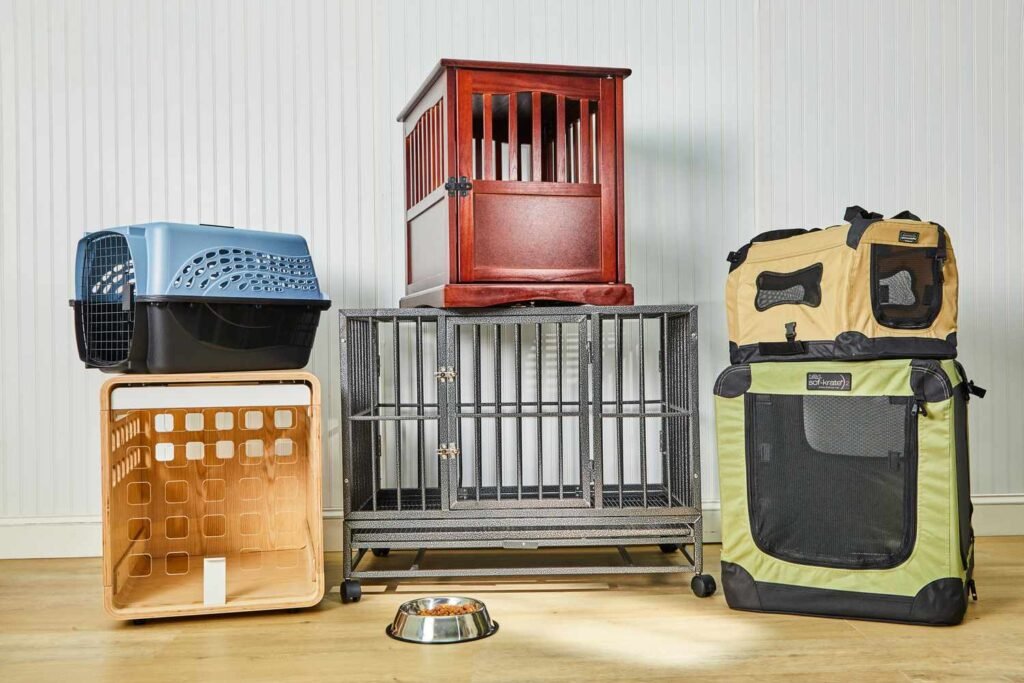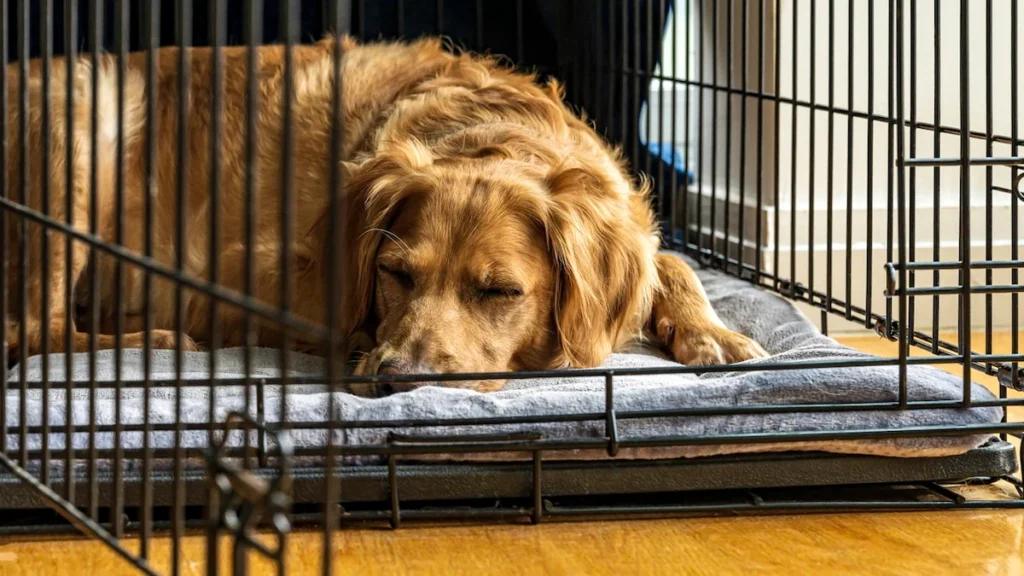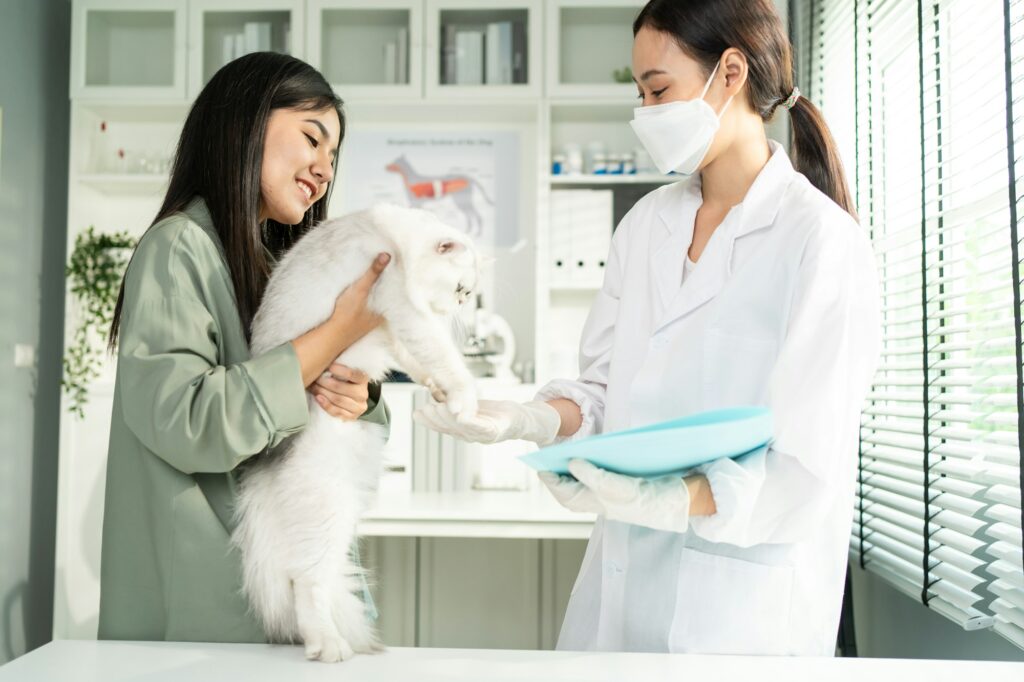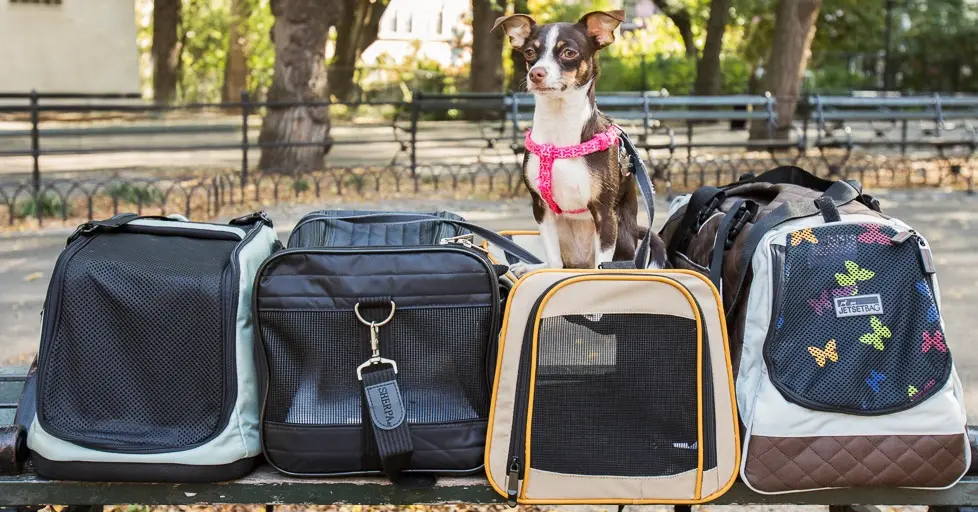Introduction to Pet Travel Needs and Trends
In the UK, the bond between Brits and their pets is stronger than ever, with over half of us sharing our homes with a furry friend. The Pet Food Manufacturers’ Association (PFMA) tells us that a whopping 51% of UK adults own a pet. It’s not just about having a pet; it’s about including them in every aspect of our lives, travel included. As we’re becoming more inclined to take our pets on adventures, the need for the right travel gear has never been more pressing.
Ensuring our pets’ safety, comfort, and adherence to legal requirements isn’t just a courtesy; it’s a necessity. Whether it’s a quick trip to the vet or a holiday across the country, the journey should be as stress-free as possible for our animal companions. With the right travel crate and accessories, we can make this a reality. This guide aims to shed light on how to choose the perfect travel crate and accessories for your pets, keeping them cosy and secure, no matter the distance or destination.
The rise in pet travel isn’t just about convenience. It’s a reflection of the changing dynamics in pet ownership and our desire to share more experiences with our pets. Given this shift, it’s essential to be well-informed about the best practices for travelling with pets. With a focus on safety, comfort, and legality, we can ensure our pets enjoy the journey just as much as the destination. Let’s dive into what makes for the ideal travel setup for your furry family member.
Understanding Different Types of Travel Crates

When it comes to trekking across the UK or even venturing abroad with our pets, the choice of travel crate is pivotal. The market is awash with options, each catering to different needs, including travel modes, and pet sizes. Let’s navigate through the main types: hard-sided crates, soft-sided crates, and wearable carriers, and understand which suits your pet best.
Hard-Sided Crates: The Sturdy Companion
Hard-sided crates are the go-to for air travel, praised for their durability and robust safety features. Made from materials like heavy-duty plastic, they’re designed to withstand knocks and bumps, providing a secure sanctuary for your pet during flights. Manufacturers and pet travel surveys often recommend these crates for larger breeds or pets that like to chew, as they offer more protection. Airlines have strict regulations for pet travel, and hard-sided crates often tick all the boxes, from ventilation to size specifications.
Soft-Sided Crates: Comfort on the Go
For car or train journeys, soft-sided crates offer a lightweight and flexible option. Constructed from fabrics like nylon or canvas, they’re easier to carry and can be more comforting for pets, thanks to their less rigid structure. Ideal for smaller breeds or short trips, these crates provide ample ventilation and are a cosy nook for your pet to relax in. While not suitable for air travel, they’re perfect for pet owners who prefer road trips or rail journeys across the UK.
Wearable Carriers: Keeping Them Close
For the ultimate in closeness and convenience, wearable carriers are a hit among pet owners. These are especially favoured for very small pets or animals needing extra comfort and security. Whether it’s a front sling or a backpack-style carrier, keeping your pet close can reduce anxiety and make for a more enjoyable travel experience for both of you. While not suitable for all travel types, they’re perfect for short trips around town or for navigating busy train stations and airports.
Choosing the right travel crate or carrier depends on various factors, including your pet’s size, the travel mode, and the journey’s length. Manufacturers’ recommendations and pet travel surveys can guide you towards the best option for your furry friend, ensuring they’re as comfortable and safe as possible, whatever the journey may entail. Whether it’s a hardy crate for those long haul flights or a snug, soft-sided one for a car adventure, there’s a perfect travel solution for every pet.
Key Features to Look for in a Travel Crate

Selecting the right travel crate is not just about picking the sturdiest or the most comfortable option; it’s about ensuring a safe and pleasant journey for our pets. Key features such as ventilation, size, security, and materials are paramount. Understanding these features can help pet owners make informed choices that align with their pets’ well-being and comply with the UK’s Animal Welfare Act.
Ventilation: A Breath of Fresh Air
Proper ventilation is crucial in preventing overheating and ensuring your pet has access to fresh air throughout their journey. A survey by a pet travel organisation highlighted that 20% of pet owners are concerned about the risk of heatstroke when travelling with their pets during the summer. Crates designed with ample ventilation can significantly reduce this risk, making them a vital feature to consider. Look for crates with side vents or mesh panels that allow for air circulation, ensuring your pet remains cool and comfortable, even on the warmest days.
Size Matters: Room to Move
The size of the crate is another critical factor. It should be spacious enough for your pet to stand, turn, and lie down comfortably. This not only aligns with the requirements of the Animal Welfare Act in the UK, which emphasises the need for pets to be able to exhibit normal behaviour patterns, but it also ensures the comfort and well-being of your pet during travel. A cramped crate can lead to discomfort and stress, so measuring your pet and following the manufacturer’s size recommendations is essential for a stress-free journey.
Security: Safe and Sound
The security features of a travel crate ensure that your pet remains safely contained during travel. This includes durable latches and locks that can’t be easily opened, especially important for curious or anxious pets that might attempt to escape. The crate should be sturdy enough to withstand movement, preventing it from opening during transit. Ensuring your pet’s safety also means peace of mind for you, allowing you to focus on the journey ahead.
Materials: Durability and Comfort
The material of the crate impacts its durability, weight, and comfort. Hard-sided crates are typically made from heavy-duty plastic or metal, offering excellent protection and security. Soft-sided crates, on the other hand, are made from fabrics such as nylon, providing a more comfortable and less intimidating environment for your pet. The choice of material should consider the type of travel, the pet’s size, and their temperament, ensuring the crate is a safe haven for your pet on the move.
Choosing the right travel crate involves careful consideration of these key features. By prioritising ventilation, size, security, and materials, pet owners can ensure their furry friends travel in comfort and safety, adhering to the UK’s animal welfare standards and reducing the risk of stress and discomfort during their adventures.
The Importance of Accessories for Pet Comfort and Safety

When embarking on a journey with our pets, their comfort and safety are paramount. Beyond selecting the right travel crate, incorporating essential accessories can significantly enhance the travel experience for both pets and their owners. Accessories such as water bottles, travel bowls, crate mats, and toys are not mere luxuries; they are vital for ensuring a smooth and stress-free trip.
Hydration and Nutrition: Essential to Well-being
A study by the RSPCA has highlighted a concern among 30% of pet owners regarding keeping their pets adequately hydrated and comfortable during travel. This concern is well-founded, as dehydration can pose a serious health risk, especially on longer journeys. Portable water bottles and travel bowls are indispensable accessories, ensuring pets have access to water and food at all times. These items are designed for easy use and stability within the travel crate, preventing spills and providing pets with constant access to nourishment.
Comfort Is Key: Crate Mats and Bedding
The foundation of a comfortable travel environment is a good quality crate mat or bedding. This accessory not only adds a layer of cushioning but also helps regulate the temperature within the crate, making it warmer in cold conditions and providing insulation from the heat. A familiar-smelling mat or piece of bedding can also have a calming effect on pets, reducing travel anxiety and making the crate a more welcoming space.
Mental Stimulation and Stress Reduction: The Role of Toys
Toys play a crucial role in keeping pets entertained and mentally stimulated during travel, particularly for longer journeys where boredom can lead to stress and anxiety. Chew toys, puzzle feeders, and familiar objects can provide comfort and distraction, helping pets feel more at ease. Incorporating toys into the travel crate not only mitigates the stress of travel but also creates a more engaging and positive environment for the pet.
The right accessories can make all the difference in ensuring a pet’s journey is as comfortable and stress-free as possible. By addressing hydration, nutrition, comfort, and mental stimulation, pet owners can significantly improve the travel experience for their furry companions. These thoughtful additions to the travel crate not only cater to the physical needs of pets but also provide emotional support, ensuring they arrive at their destination happy and healthy. Accessories, therefore, are not optional extras but essential components of a pet-friendly travel setup, enhancing the wellbeing of pets on the move.
Legal and Airline Considerations in the UK

Navigating the legalities and airline policies regarding pet travel in the UK is crucial for a smooth journey with your furry friend. Understanding and complying with these regulations can prevent any unwelcome surprises, such as travel delays or denials. The UK’s Department for Environment, Food, & Rural Affairs (DEFRA) sets clear guidelines for pet travel, covering everything from crate specifications to necessary accessories, ensuring pets’ safety and well-being during flights.
DEFRA Regulations: The Foundation of Safe Pet Travel
DEFRA’s regulations serve as the cornerstone for pet travel, emphasising the need for appropriate vaccination, microchipping, and documentation. When it comes to travel crates, the requirements are stringent, focusing on the size, strength, and ventilation of the crate to ensure that pets have enough space to stand, turn, and lie down comfortably. These regulations aim to mitigate risks and ensure the welfare of pets during travel. Compliance with these rules not only ensures the safety of pets but also significantly reduces the chances of travel incidents. Statistics have shown that adherence to DEFRA’s guidelines can prevent the majority of travel-related issues, highlighting the importance of being well-prepared.
Airline-Specific Requirements: Beyond the Basics
While DEFRA provides the baseline for pet travel, it’s important to note that airlines may have their own set of requirements that exceed these general guidelines. For instance, some airlines specify the type of materials the crate must be made from or require additional security features such as locking mechanisms that cannot be opened accidentally. Airlines might also have specific requirements for accessories within the crate, such as absorbent bedding and spill-proof water bowls.
The Importance of Compliance
Complying with both DEFRA regulations and airline-specific policies is not just about following the rules; it’s about ensuring the safety and comfort of your pet during travel. Non-compliance can lead to travel delays, denials, or, in severe cases, quarantine for your pet upon arrival. The statistics on pet travel incidents serve as a stark reminder of the potential consequences of failing to meet these standards. For instance, incidents of pets being denied boarding due to inappropriate crates or missing documentation are not uncommon, causing stress for both pets and owners.
Preparing for pet travel involves a thorough understanding of both legal requirements and airline policies. By ensuring that travel crates meet or exceed these standards and that all necessary accessories are in place, pet owners can pave the way for a hassle-free journey. This level of preparation not only adheres to the legal and airline stipulations but also demonstrates a commitment to the well-being of our pets, ensuring they are safe, comfortable, and happy throughout their travel experience.
Practical Tips for Preparing Your Pet for Travel
Preparing your pet for travel, especially if it involves a new crate, is essential for ensuring their comfort and reducing anxiety. Gradual acclimatisation to the crate can significantly decrease travel-related stress, with animal behaviourists noting that such preparation can reduce stress by up to 50%. Here are some practical steps to help your pet get ready for their journey, ensuring they feel secure and comfortable throughout.
Gradual Acclimatisation: Familiarity Breeds Comfort
Start by introducing your pet to the travel crate as early as possible before your trip. Place the crate in a common area of your home where your pet spends a lot of time, allowing them to explore it on their own terms. Keep the crate door open and encourage exploration with treats and positive reinforcement. This gradual introduction helps build a positive association with the crate, making it a familiar and safe space.
Create a Comfortable Environment Inside the Crate
To make the crate more inviting, include familiar items such as your pet’s favourite blanket, a piece of your clothing, and their preferred toys. These items carry the scent of home and can provide comfort and reassurance to your pet during travel. Ensure the bedding is comfortable, and consider adding a crate mat for extra cushioning. The goal is to create a cosy environment that feels like a safe haven for your pet.
Practice Sessions: Simulating the Travel Experience
Once your pet seems comfortable spending time in the crate, start simulating the travel experience. This includes closing the crate door for short periods and gradually increasing the time as your pet becomes more accustomed. Practice carrying the crate around the house or taking short drives if you’re travelling by car. These practice sessions help your pet get used to the motion and sounds associated with travel, reducing anxiety and stress during the actual journey.
Positive Reinforcement: Rewards and Comfort
Throughout the acclimatisation process, use plenty of positive reinforcement. Treats, praise, and cuddles after practice sessions reinforce the idea that the crate is a good place. This positive association can make entering the crate less stressful when it’s time to travel. Remember, the goal is to ensure your pet feels secure and content in their travel crate.
Consultation with a Vet or Animal Behaviourist
For pets that are particularly anxious about travel or being in a crate, consulting with a vet or an animal behaviourist can provide tailored strategies to address their specific needs. They can offer advice on additional training techniques or recommend calming supplements if needed.
By taking the time to prepare your pet for travel, you’re not just easing their anxiety; you’re also contributing to a safer and more enjoyable travel experience for both of you. Gradual acclimatisation, coupled with familiar comforts and positive reinforcement, can make a significant difference in how your pet perceives travel, turning it from a stressful ordeal into an exciting adventure.
Conclusion: Making Informed Choices for Happy Travels

Choosing the right travel crate and accessories for your pet is not just about meeting legal requirements or following airline policies; it’s about ensuring the safety, comfort, and well-being of your beloved companion during your travels. The journey towards finding the perfect travel setup begins with understanding your pet’s specific needs, the type of travel you’ll be undertaking, and the importance of complying with UK-specific regulations and guidelines.
We’ve navigated through the various types of travel crates, highlighting the significance of ventilation, size, security, and materials to cater to different travel scenarios and pet sizes. Accessories such as water bottles, travel bowls, crate mats, and toys have been shown to play a crucial role in enhancing pet comfort and safety, addressing concerns like hydration and stress reduction. Legal and airline considerations remind us of the necessity to align with established standards, ensuring that our travel plans proceed without a hitch.
As we prepare our pets for travel, incorporating gradual acclimatisation strategies and familiar comforts can significantly reduce their anxiety, making the travel experience more enjoyable for them—and, by extension, for us. It’s about creating a positive environment where our pets feel secure, valued, and cared for, even when they’re on the move.
In making informed decisions about travel crates and accessories, we’re not just adhering to rules and regulations; we’re prioritising the happiness and safety of our pets. The insights and recommendations provided, rooted in UK-specific data and regulations, serve as a guide to achieving just that. As pet owners, our goal is to share as many joyful moments as possible with our pets, and that includes travel adventures.
So, as you plan your next journey, remember that with the right preparation, consideration, and care, travelling with your pet can be a smooth and delightful experience. Here’s to enjoyable and safe travels for pets and their owners, filled with new sights, sounds, and experiences. After all, the best adventures are those shared with our furry friends.





